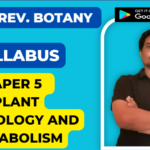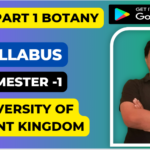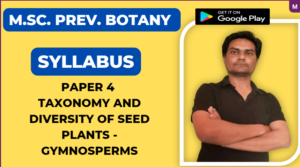![]()
Paper 3 Biology and Diversity of Lower Plant- Cryptogames
Unit 1
Phycology : Algae in diversified habitats (Terrestrial freshwater marine), thallus organization, cell ultrastructure, reproduction (vegetative, asexual, sexual) criteria for classification of lage pigment resreve food, flagella, classification, salient features of Protochlorophyta, Chlorophyta, charophyta, Xanthophyta, Bacillariophyta, Phaeophyta and Rhodophyts : with special reference of Microcystis, Hydrodictyon, Drapernaldiopsis, cosmarrium, algal bloom, algal biofertilizers, Algae as food, feed and use in industries.
Unit 2
Mycology : General characteristics of fungi, substrate relationships in fungi, cell ultrastructure, unicellular and multicellular organization cell wall composition, nutrition (saprobic, biotropic, symbiotic) heterothallism, heterokaryosis, parasexuality, recent trends in classification, Phylogeny of fungi general account of Mastigomycotina, Zygomycotina, Ascomycotina, Basidiomycotina, Deuteromycotina with special reference to Pilobolus, Chaetomium, Morchella, Melampsora, Polyporus, drechslera & Phoma fungi in industry medicine and as food, fungal disease in plants and humans, mycorrhizae, fungi as biocontrol agent.
Unit 3
Bryophyta : Morphology, structure, reproduction and life history distribution, classification, general account of marchantiales, Junger-maniales, Anthocerotales, Sphagnales, Funariales and Polytrichales with special reference to Plagiochasma, Nototylus and Polytrichum, economic and ecological importance.
Unit 4
Pteridophyta : Morphology, anatomy and reproduction; classification; evolution of stele; heterospory and origin of seed habit; General account of fossil Pteridophyta; introduction to psilopsida, Lycopsida, sphenopsida and Pteropsida; with special referance to Lycopodium, Gleichnia, Pteris, Isoetes & Ophioglossum.










